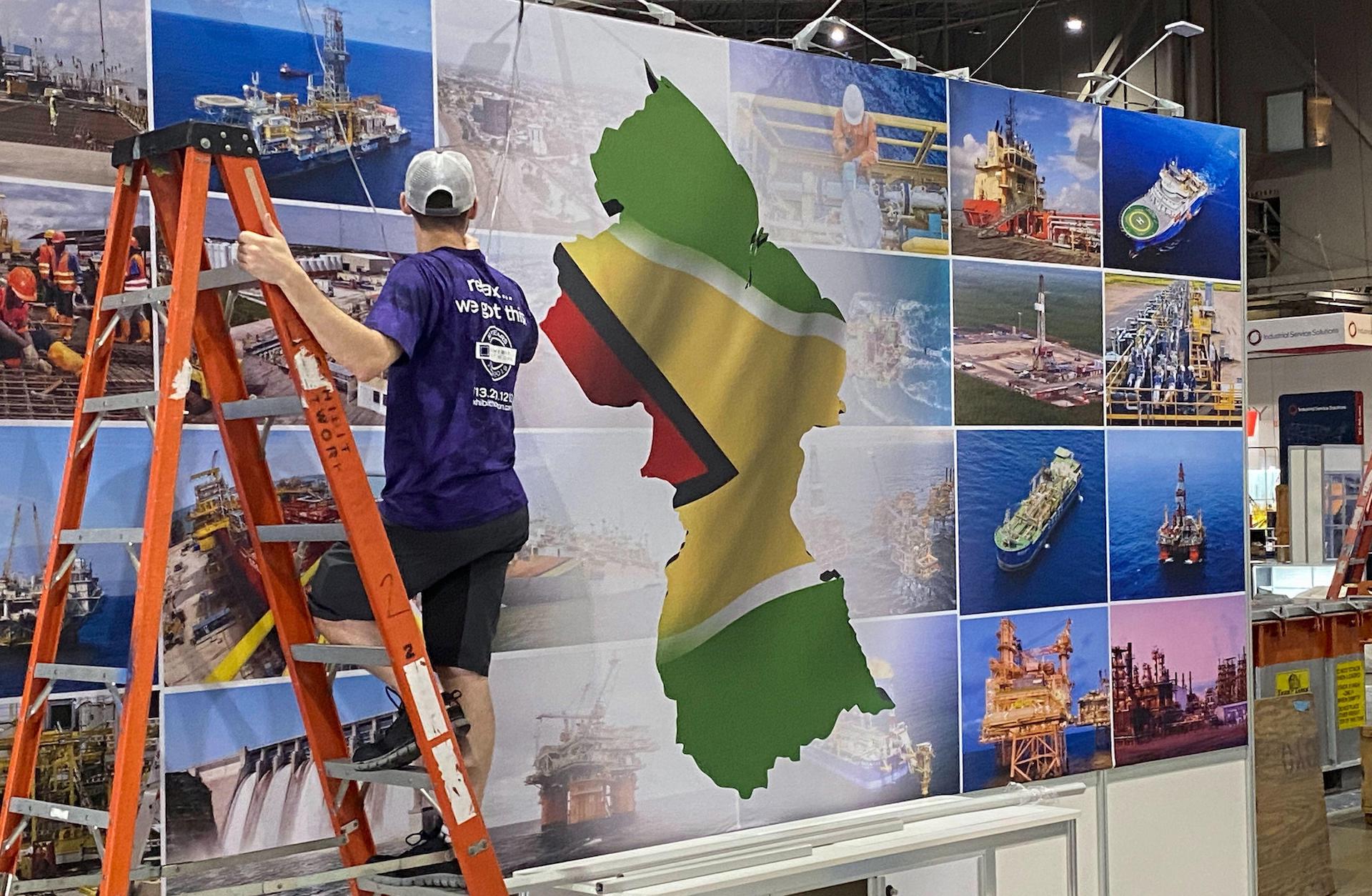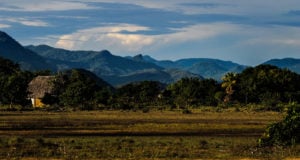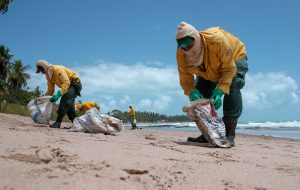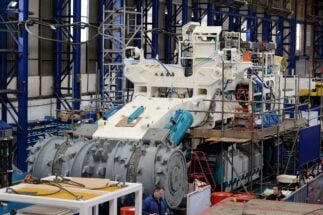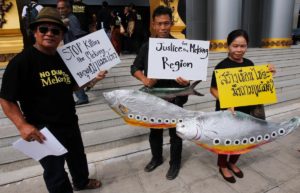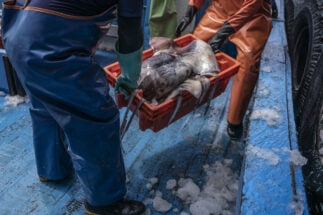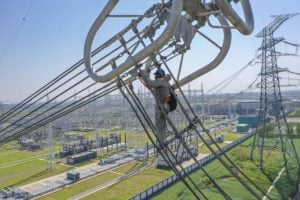Since establishing ties in the 1970s, China has become a major contributor to Guyana’s economic development, with a presence in infrastructure, forestry, fisheries, wholesale and retail services sectors, as well as in gold and bauxite mining.
After years of partnership in these industries, China now appears well positioned to strengthen its bilateral ties with Guyana, with one of its state-owned oil firms among the key partners involved in the South American country’s largest deep-water oil reserves – the Stabroek Block.
This offshore concession is operated by the ExxonMobil subsidiary Esso Exploration and Production Guyana Limited (EEPGL). To date, Esso and its partners, the USA’s Hess Corporation and the China National Offshore Oil Corporation (CNOOC) – the third-largest national oil company in China – have discovered an estimated 10 billion barrels of recoverable oil equivalent at the site.
In this oil-rich 27,000km2 block, CNOOC holds a 25% stake, with Hess’ at 30%, while the operator, EEPGL, has 45%.
The discovery of these significant resources has sparked debate in the local and international arena, including on the environmental, climate and governance risks and the future role of Chinese companies in Guyana’s burgeoning oil and gas industry.
China as an important source of investment for Guyana
CNOOC itself is a relative newcomer to Guyana’s oil sector, which only had a production capacity of 120,000 barrels per day as of December 2019. However, China’s state-owned oil companies are expected to demonstrate their economic strength in the years to come, according to Arthur Deakin, co-director for energy analysis at Americas Market Intelligence (AMI). He adds that China’s role as a development partner will grow in tandem with Guyana’s economic prosperity.
“What China offers Guyana that the US does not is speed; their centralised government allows them to disperse sizeable funds without bureaucratic delays or red tape,” he told Diálogo Chino. “I think China could win many projects that will underpin Guyana’s oil industry and energy sector.”
Deakin pointed to the Amaila Falls hydropower station as an example: the project was recently given government approval to be built, owned and operated by the China Railway Group Limited, which will then supply electricity to Guyana Power and Light, the public utility.
As a small state and as a World Trade Organization member, our job is not to seek to exclude states with an interest in, and a capacity to invest in Guyana
As Guyana moves to develop its gas resources as well as the industries required to support them, Deakin said the country will need foreign direct investment. This is not just going to come from the US and western nations, he added, suggesting that much would arrive from China. “So as Guyana grows, so too will China’s influence in the oil sector,” the AMI analyst added.
Such a forecast is supported by a Trinidadian energy expert who has worked with the current and former governments of Guyana on the legislative framework for the oil industry, and who did not wish to be identified. The analyst agrees that, in the next few years, one can expect to see China’s investments in Guyana grow.
On CNOOC’s direct investment offshore, he said that the state-owned company could buy out stakes in other offshore blocks such as the Orinduik block, led by London-based firm Tullow, Canada’s Eco Atlantic, Total SA of France, and Qatar Energy.
He noted that companies such as Eco, which are focused mostly on identifying new frontier areas requiring low-cost entry, are known for cashing out of projects early. Given the mounting momentum for the global energy transition, he posited that CNOOC could seek to acquire the stakes held by Eco, and even Total, which is looking to reduce its carbon footprint.
“The game is very, very dynamic and a lot of money is at play in Guyana,” the Trinidadian consultant said of the sector’s development.
For CNOOC, the investment in Guyana’s development also complements China’s foreign policy goals: “Carrying out national initiatives and actively promoting the development and construction of countries along the Belt and Road is an honourable mission for CNOOC,” read a statement from 2019. “The Guyana Stabroek project will continue to increase production and storage for the company in the next few decades, and contribute to high-quality sustainable development,” it continued.
Climate and governance risks
However, the discovery of oil has sparked debate in Guyana on the sustainability of development of the new resource, and the government’s aspirations to maintain its low-carbon credentials.
Melinda Janki, a Guyanese international lawyer and staunch advocate for environmental protection, said that previous and current Guyanese governments have failed to demonstrate that they can stand up to the oil companies and enforce strict penalties and orders when environmental breaches are found, or when the soundness of their operations is unproven.
Janki is also part of the legal team representing two Guyanese who have mounted the first constitutional challenge to ExxonMobil’s operations in the Caribbean. The case argues that emissions from the US oil major’s Liza Phase One, Liza Phase Two and Payara projects in Guyana are so significant, they infringe upon citizens’ right to a healthy and safe environment.
400million
cubic metres of gas have been flared since Guyana began extracting offshore oil in 2019
A group of 30 Guyanese stakeholders, including Janki, wrote to ExxonMobil’s shareholders this year about the environmental threat posed by the ongoing gas flaring aboard the Liza Destiny floating production storage and offloading vessel (FPSO). The Stabroek bloc would require ten FSPOs to recover its 10 billion-barrel reserves, according to concessionaires Esso, Hess and CNOOC. Thus far, nearly 400 million cubic metres of gas have already been flared – the process of disposing of the gas associated with oil production by burning it.
But along with the concerns over the environmental threats of the Stabroek Block operations, some Guyanese fear that the country has already been afflicted by the “resource curse” – the negative impact of natural resource abundance on meaningful economic growth and indicators of democracy and development compared to countries with fewer endowments.
Carl B. Greenidge, a former Minister of Foreign Affairs and now an advisor on borders, does not share this “doom and gloom” perspective. He said the oil and gas discoveries and their development will provide the platform Guyana needs to fast-track its development and diversify its economic structure, a view shared by many Guyanese.
He said China can be a key development partner for Guyana as it matures into a strategic oil and gas player and insisted that while traditional revenue earners such as mining and agriculture have buttressed strong economic growth over the years, nothing has the capacity to bring in the resources needed for rapid transformation as quickly as oil. This is especially pertinent now that Guyana, which became independent of British colonial rule in 1966, may be able to retain more of the economic benefits.
Moreover, the future growth and transformation of Guyana will hinge on investment in infrastructure and human resources, Greenidge said. The former minister added that Chinese companies have been preparing technical and economic feasibility studies on infrastructure in Guyana, which formally endorsed China’s Belt and Road Initiative (BRI) in July 2018.
Transport infrastructure, such as deep-water ports and major highways, is a particular focus: “There has been no comparable interest demonstrated by US companies in this sector or in productive capacity such as manganese and bauxite mining,” Greenidge said. “It would not be unreasonable therefore to see China’s companies bidding more [often] than those of the US when the time comes.”
“As a small state and as a World Trade Organization member, our job is not to seek to exclude states with an interest in, and a capacity to invest in Guyana and in contributing to building our physical and social infrastructure,” Greenidge said of the country’s variety of international development partners. “Guyana needs to set appropriate rules and to ensure that its executive institutions are in a position to implement and enforce these rules.”
Deakin, who has followed the Guyana oil story since its beginnings in 2015, said it is too early to tell if the country is afflicted by a resource curse. He did, however, note that the government’s closeness to the oil sector is a red flag: current legislation puts too much control in the hands of the Minister of Finance, and there is no mechanism in place to ensure transparency and accountability.
The AMI analyst said industry practice dictates that there should be an arms-length approach and that the government should have an independent body or commission overseeing the sector. This stands in contrast to the current institutional setup, in which the regulator is nestled within Guyana’s government. President Irfaan Ali has, however, recently indicated plans to establish a new, independent authority before the end of 2021.
For Greenidge, broader environmental goals and the promise of transformative economic development come into conflict in the case of Guyana’s oil, which represents a challenge experienced by many developing countries as they seek to grow. He said critics of any petroleum sector activity in Guyana per se often inaccurately assume that their views are shared by a majority of the populace and that without oil development, the poor can still be significantly better off.
The discovery or presence of the resource itself should not be “demonised”, Greenidge concluded. But with the right mechanisms in place for good governance, which the country seeks, prosperity can follow, he said.
